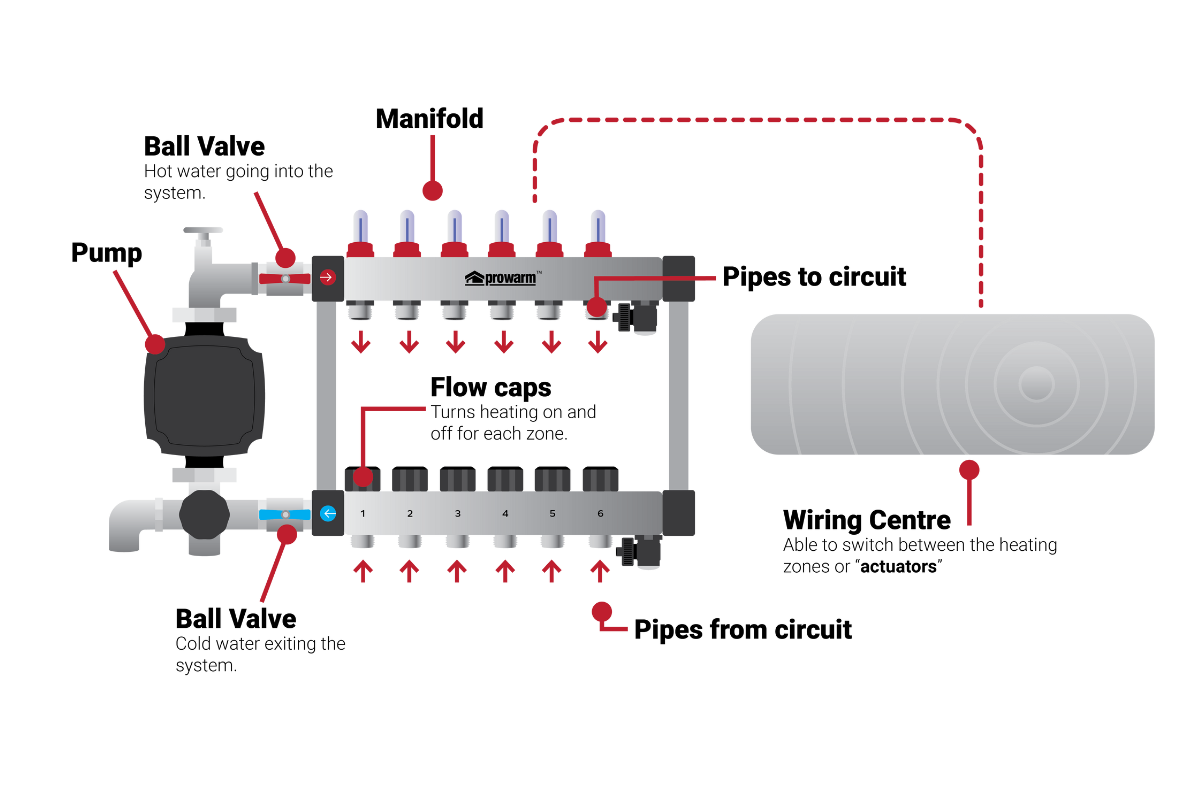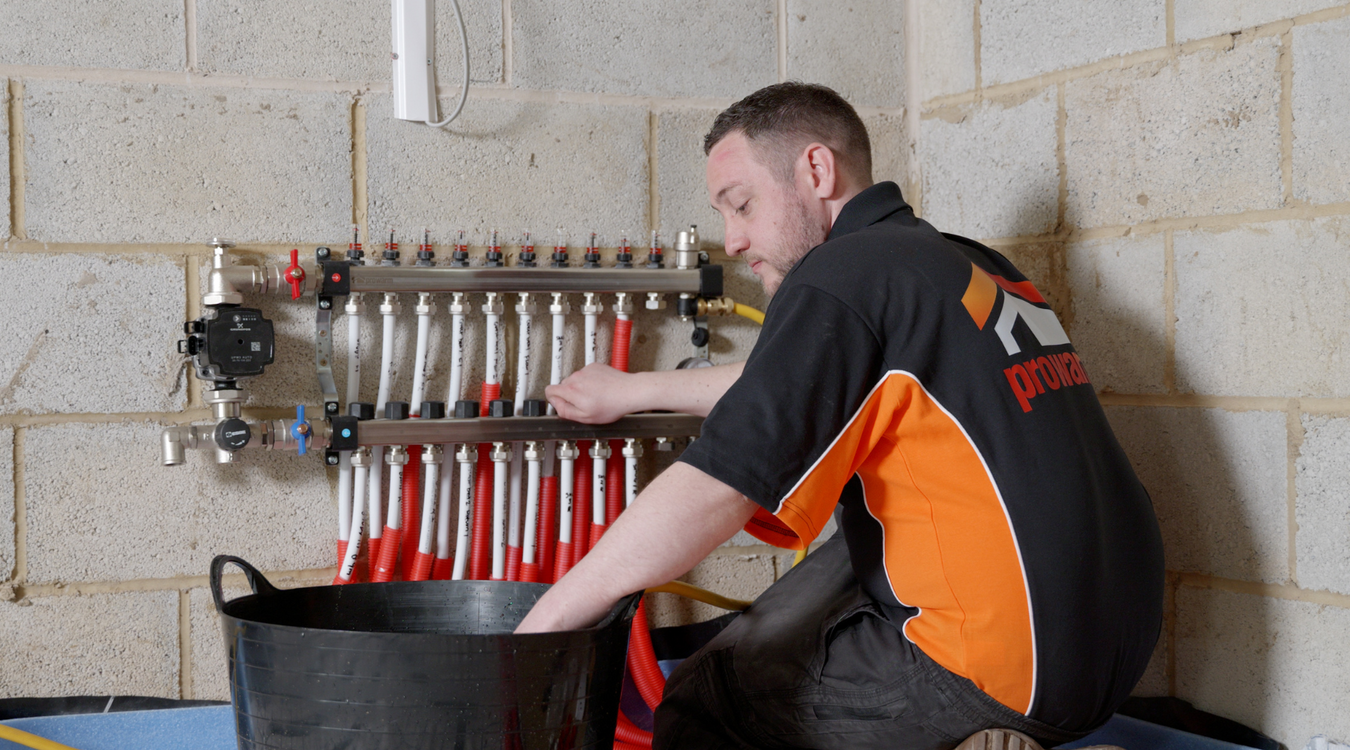Over the last 3 decades, underfloor heating has become increasingly popular with homeowners due to the realistic prospect of making significant savings on energy bills. An underfloor heating system, whether electric or water, can be up to 40% more energy efficient than a traditional home heating system.
A water-based underfloor heating system offers the highest cost savings over the long term, with much of the action centred on the system’s underfloor heating manifold. In this guide, we explain why this crucial piece of equipment is so important to the smooth operation of a water-based underfloor heating system.

 Get A Free Quote
Get A Free Quote
 Contact Our Team
Contact Our Team
 View Account
View Account


